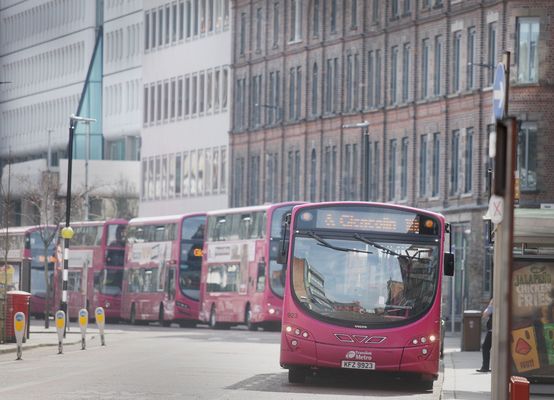FORTY-ONE years ago a sombre group gathered in the Glenn Inn during a press conference to speak about the death of hunger striker Bobby Sands, who died on 5 May 1981 after 66 days refusing food.
From the photo you can feel the sadness and the pressure of the moment in the room. Even famous American comedian Dick Gregory (seated in the middle) looks forlorn. The photo was featured in Andersonstown News 9 May 1981 edition and also features prominent members of the H-Block Committee including Fergus Ó hÍr, Bernadette Devlin McAlliskey and Jim Gibney.
During this time, the eyes of the world were turned to the North, as the hunger strikes, which would eventually see 10 men die, had just lost their leader in the prison. Bobby Sands, who although only 27 at the time of his death, helped changed the entire landscape of Irish history with both his and his comrades’ struggle for political status with Margaret Thatcher’s brutal Tory government.
Speaking about the day in question, Jim Gibney, who is in the photograph to the right of Bernadette Devlin McAlliskey, said the thoughts in the room at the time were on the sadness of Bobby’s death, sadness for his family, and also worry for Francis Hughes, who then very ill, and would pass away on 12 May 1981, the second of the ten to die.
Jim said: “The photo was taken just after the tragic death of Bobby Sands. We were thinking of the loss of his life, thinking of his parents and family, and the loss to his comrades in Long Kesh, the H-Blocks and in Armagh Women’s Prison to whom he showed such outstanding leadership as a young man.
"Bobby offered leadership in the most arduous circumstances. He was an outstanding leader of the prisoners on protest for political status. Our primary consideration would have been on the impact of his death on his family, and we would have been very worried about Francis Hughes, who was very ill at the time of Bobby’s death.
"Our collective minds, those of us who were involved in the campaign on the outside were mindful that the days were passing for others who were on hunger strike, and we would have been consumed with trying to save the lives of the other prisoners.”
Speaking about the presence of Dick Gregory in the photograph, Jim explained that the story of the prisoners facing down the British government captured news all over the globe, especially in the US, where prominent figures in America’s Civil Rights movement, and all sorts of peace and justice campaigners came over to speak in support of the prisoners.
Dick Gregory was a prominent comedian and civil rights leader, who had himself been on hunger strike many times against the racist and segregationist Jim Crow laws in America’s Southern States. Jim stated Dick Gregory, and many others like him travelled from the US during this time to show solidarity with those in the H-Blocks.
“Dick’s involvement stems from the first hunger strike in late 1980 which involved the H-Blocks and the three women prisoners in Armagh. It was a massive issue in the United States, in political, media and activist circles. It was absolutely huge. People from America who were involved in Civil Rights, such as Dick Gregory, and others like him who were involved in progressive politics would have come over to Ireland at the invitation of the National H-Block/Armagh Committee.
"Dick went over to lend his support, and was one of many Americans who came over at the time to lend their support. Others who came over were the American priests, the Berrigan Brothers, Dan and Philip and former US Attorney General Ramsey Clark. There was a lot of international solidarity with the prisoners, and it reflects the long relationship between the US and Ireland.”
Asked about how he feels looking back at this image in the current political climate which during the past few years have seen huge shifts, both demographically and politically, with Sinn Féin now the largest party in terms of seats in the NI Assembly, and the recent census figures which broke apart Northern Ireland’s raison d'être, of being a state which would permanently have a designed majority of those from a Protestant/Unionist background, Jim reflected on how much has changed in those 41 years.
“It’s very surreal looking at photographs of back then, and looking at how things are now," he said. "Back then people were dying on the streets. Children were being shot with plastic bullets.
"Seven children were killed during the 10 months of the hunger strikes by plastic bullets, and I believe a total of 60 people died on the streets, killed by members of the British Crown Forces.
"At the time it appeared there was no end in sight, peace was the furthest thing from people’s minds, but Bobby’s election was a huge victory for the people of Fermanagh & South Tyrone. They were voting to save his life.
"In a way, when you look back you can see the connection between Bobby signing that nomination paper, which he did in his cell witnessed by Pat Finucane, to the first electoral successes of Sinn Féin. In the 1982 Assembly elections we gained five seats, and Gerry Adams was elected MP for West Belfast in the 1983 general election."







